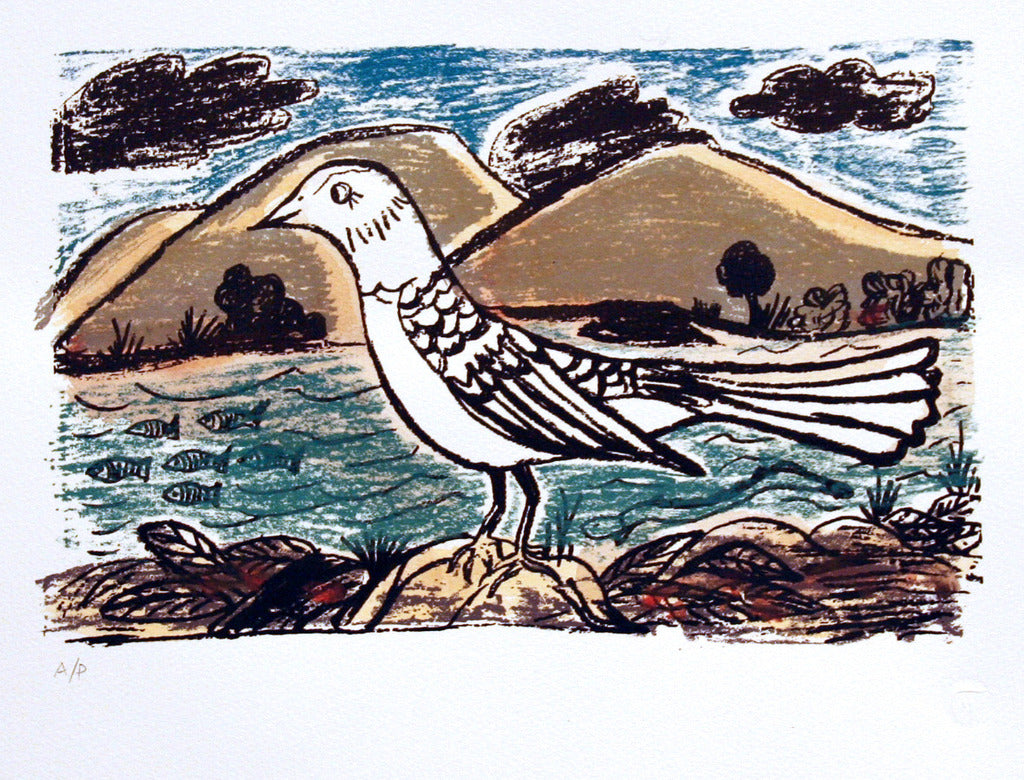Betty Andy
BETTY ANDY | 'Jigirr Jigirr' Screen Print | Edition of 20
BETTY ANDY | 'Jigirr Jigirr' Screen Print | Edition of 20
Couldn't load pickup availability
Image size: 195 x 305mm
Paper size: 390 x 495mm
Artist: Betty Andy
Region: Cardwell, Far North Queensland
Language: Yalangi/Waanji
Artist bio: Betty Andy has been painting for some time but has only just begun exhibiting. Her work is brilliantly coloured and reflects her strong connection to culture.
The Girringun Aboriginal Art Centre, based in Cardwell, represents artists from nine Traditional Owner Groups, the Nywaigi, Gugu Badhun, Warrgamay, Warungnu, Bandjin, Girramay, Gulgnay, Jirrbal and Djiru people.
The traditional country of these groups covers some 25,000 square kilometres, from north of Townsville, south-west to Clarke River, north to the Mission Beach area, west to Ravenshoe and east to include Hinchinbrook and the Family Group Islands.
Djumbunji Press, through collaborative printer Bobbie Ruben, delivered workshops in screen printing at the Girringun Art Centre as a means of providing practical support to the artists after many suffered devastating losses as a result of Severe Tropical Cyclone Yasi. The resultant exhibition, Gijalordi, explores the local Kingfisher story.
Artwork story:
The Kingfisher Story: Gijalordi
As told by Doris Kinjun, Gulnay Elder
August 2010
He’s the lifeline of the river, the Kingfisher, and mainly dwells along the riverbank.
We call him Gijalordi. He has a white breast and blue wings.
There are two other types of Kingfishers.
There is the one with purple and orange, and another really rare one with the really long white tail.
The Kingfisher represents water.
You don’t see them way out.
You only see them around waterholes and the river.
He was the lifeline because he was the maker of the Tully River and all these little creeks around here.
He must have wondered, “Why did they choose me out of all these birds to do that?”
The Willy Wag Tail was the boss and it was him that told the Kingfisher to go out and make the rivers.
To me, it was really important that he was chosen.
The story goes that they had no water in the beginning and all the animals, all the Kangaroos and the others, went out looking for water.
They tried the grasses, but there was no water.
But the Blue Tongue Lizard knew where the water was because they saw that his whiskers were wet.
So they called a big meeting, big talk, to discuss how to catch him out.
They decided on a little white Rat, guloo, a native of the rainforest.
They said, “You go. You’re small.”
This story starts near Glen Ruth near Mount Garnet.
There is a big flat rock there.
That was where the Lizard would get water, but all the time he pretended he was thirsty.
He was gammon.
They sent the little white Rat to find out.
They put paint on him so he was black and he hid behind a log so the Blue Tongue Lizard wouldn’t see him.
He began to follow the Lizard.
The Blue Tongue Lizard was always looking back to see if anyone was following, but he never saw the Rat.
Finally he got to where the stone was and was found out.
The Willy Wag Tail called to everyone to lift the rock and sent the Kingfisher to make the rivers.
“Go now, and make the drains for the rivers to run,” he said.


